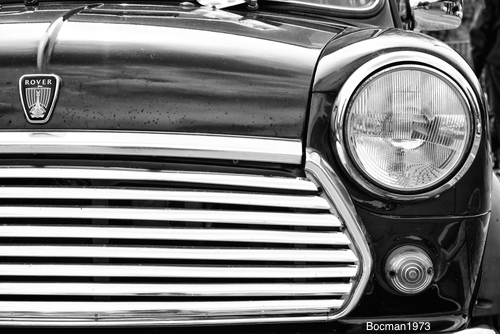Mini Gets Personal
During the 1990s there was an enormous technology boom following the introduction of the World Wide Web in 1991. Just five years after the Internet was made available to the public, ten million computers were connected and by 1998 there were 130 million web users across the globe.
The 1980s were all about flashy gadgets, spending in excess and driving around in expensive cars, while in the 1990s there was a return to more traditional values. People who couldn’t afford an expensive sports car found a way to drive a car they’ve always wanted through modification.
Modifying cars became hugely popular in the early nineties as a way to make a vehicle unique and individual. People fitted louder exhausts to their car, customised the bodywork, bought larger wheels and fine-tuned the engines.
Technology as a whole was making big leaps in the nineties while the motor industry was taking small – nevertheless progressive – steps. By the second half of the 1990s society started to long for a more traditional approach to cars and driving, signalling a fall of the yuppie. Manufacturers were quick to pick up on this and responded by producing cars with safety and economy in mind rather than power and speed.
Mini was one firm to respond to changing consumer habits. From 1992 onwards, all Coopers were manufactured with a fuel-injected variety of the 1275cc engine. In 1997, all Coopers were fitted with a multi-point fuel-injected engine with the aim of lowering emissions while enhancing overall performance. Several safety improvements were also made to the cars, including airbags and side impact bars.
By the start of the decade, Mini’s shape was so well-recognised that Rover Group, who had taken over Mini from British Leyland in 1986, was able to register a trademark for the car’s design. To mark the start of the decade, Rover Group launched a new model called the Mini Cooper Rover Special Products (RSP), which was designed by the Cooper’s original creator, John Cooper, although the car’s performance was slightly reduced in comparison to the 1960’s Cooper.
The RSP gained lots of interest from consumers which confirmed the popularity of the Cooper. In fact, the Cooper was largely responsible for Mini being able to carry on trading throughout the nineties and up to the start of the new millennium, when production ended. The Cooper also garnered a revival of interest from foreign markets, such as Japan.
Similar to the 1980s, Mini continued to produce numerous special edition models. In fact, between 1980 and 2000, over 40 different special edition cars were put into production. The early nineties saw the release of the Mini Racing Green, Mini Flame Red and the Mini Check Mate, with colour schemes that matched the names. Each model was fitted with iconic Minilite wheels and painted with a white roof, foreshadowing the future design of the car.
In 1992 the company released the Mini Italian Job, based on the 1969 film. The car was available in four colours, featured Minilite wheels and came fitted with twin-spot lamps. Two years later, John Cooper Garages produced the speedy Cooper Grand Prix, which was capable of producing 86bhp. The interior of the car featured luxury leather upholstery and a walnut dashboard that was fitted with additional gauges; only 35 of these cars were actually built, with the steep initial price tag of £13,495.
At the end of the decade, Mini’s time was nearly up, but that didn’t stop the company from winning a few prestigious car awards. In 1995, Autocar voted the Mini as the ‘Car of the Century,’ while in 1996 it grabbed the title of the ‘Number One Classic Car of All Time’ by Classic & Sports Car. A global Internet survey carried out by the Global Automotive Elections Foundation in 1999 named Mini as the ‘European Car of the Century,’ and it came second in the ‘Most Influential Car of the 20th Century,’ losing out only to the Ford Model T.
Mini in the 1990s: Fun Facts
– The most expensive Mini was sold in 1997 for $80,000. The Mini Limo was a one-off model designed by John Cooper Garages. The car feature plush electric leather seats, Wilton carpets, satnav and a state of the art stereo system.
– A 1990 study revealed that 70% of Mini buyers were women.
– In 1991, sales of Minis were higher in Japan than they were in the UK.



